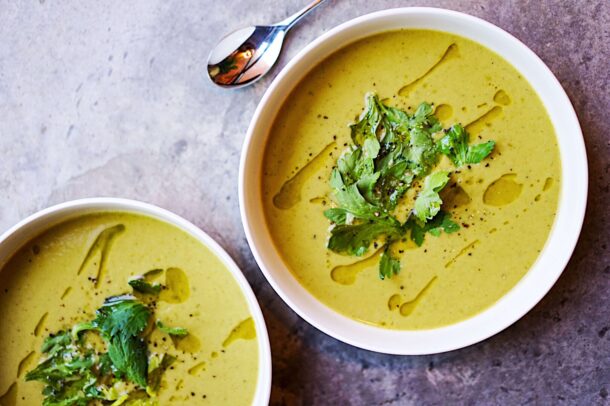By June Martin, RD, CDE
As the weather gets cooler and cold and flu season is upon us, soup becomes the ultimate comfort food! When I was asked to do a blog post on “prepared vs homemade” soup, I thought to myself – obviously homemade! Growing up, there was always a pot of homemade soup on the stove, in the fridge or in the freezer. But now that I am responsible for my own cooking I realize the answer is not that simple! Sometimes, we crave convenience.
I still believe that homemade soup is far superior to most prepared soups, but it takes time and isn’t always possible when you aren’t feeling well. So we’re going to talk about both.
There is no question that soup can be a challenge on a kidney diet for a few reasons:
- It’s often salty: manufacturers add salt to soups because it’s cheap and adds a lot of flavour.
Homemade soup, if made with a commercial soup base, can also be salty. Make sure to read the nutrition facts table on soups and choose those with the lowest salt available (ideally with less than 10% sodium)
- Additives: many prepared soups have removed some of the salt (sodium chloride) out of ingredients and replaced it with potassium chloride. This makes the sodium content of the soup lower but it unfortunately can be a problem for those who need to limit sodium. Make sure to scan the ingredients list on any prepared soups and avoid ones with potassium chloride or with sodium phosphate.
- High-potassium ingredients like tomatoes and potatoes can drive up the potassium content of the soup.
- Fluids: if you require a fluid restriction, remember that soup counts as a fluid and adjust your intake accordingly.
Homemade soup is versatile and delicious. You can adjust seasonings and ingredients to add flavour without adding salt. If making homemade soups, you can go the traditional route and make your own stock from leftover chicken or beef/lamb bones. A great alternative is the no salt-added soup broths that most grocery stores sell (as always, check the ingredients for potassium and phosphate additives). You’ll notice that the low-sodium soups that you find on this website often have acids such as lime juice, lemon juice or vinegar to add a punch of flavour without the salt. If you are making a recipe that calls for salt, consider reducing the salt by half or more and then adding an acid. Gradually reducing the salt in your cooking can be easier than eliminating it all at once.
Make a big pot of soup and freeze it in portions for days that you just don’t feel like cooking. Here are a few great ones to make:
Chicken and Rice Soup
Roasted Red Pepper Soup with Garlic Crouton
Make this one with extra broth to serve as a delicious soup:
